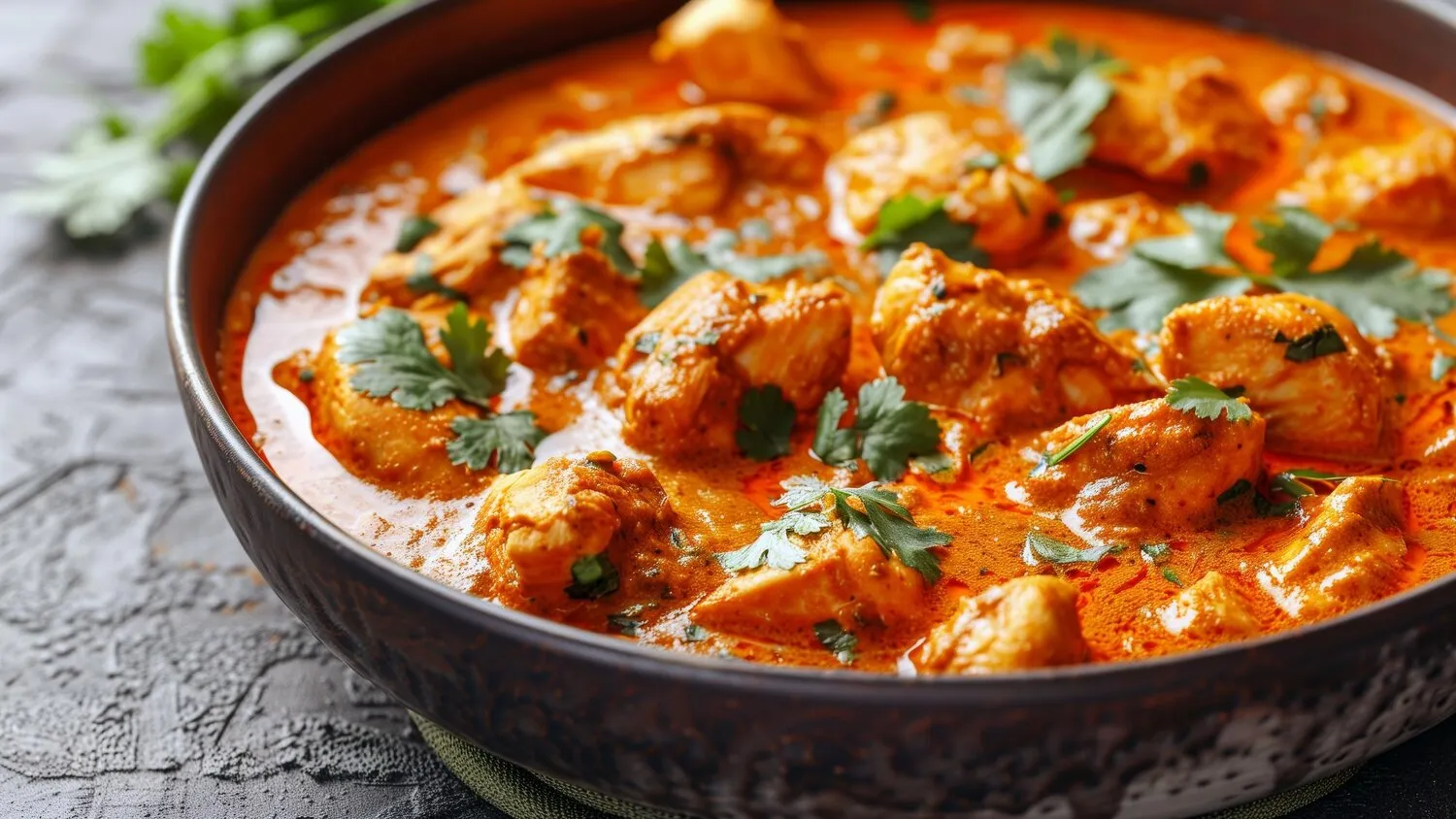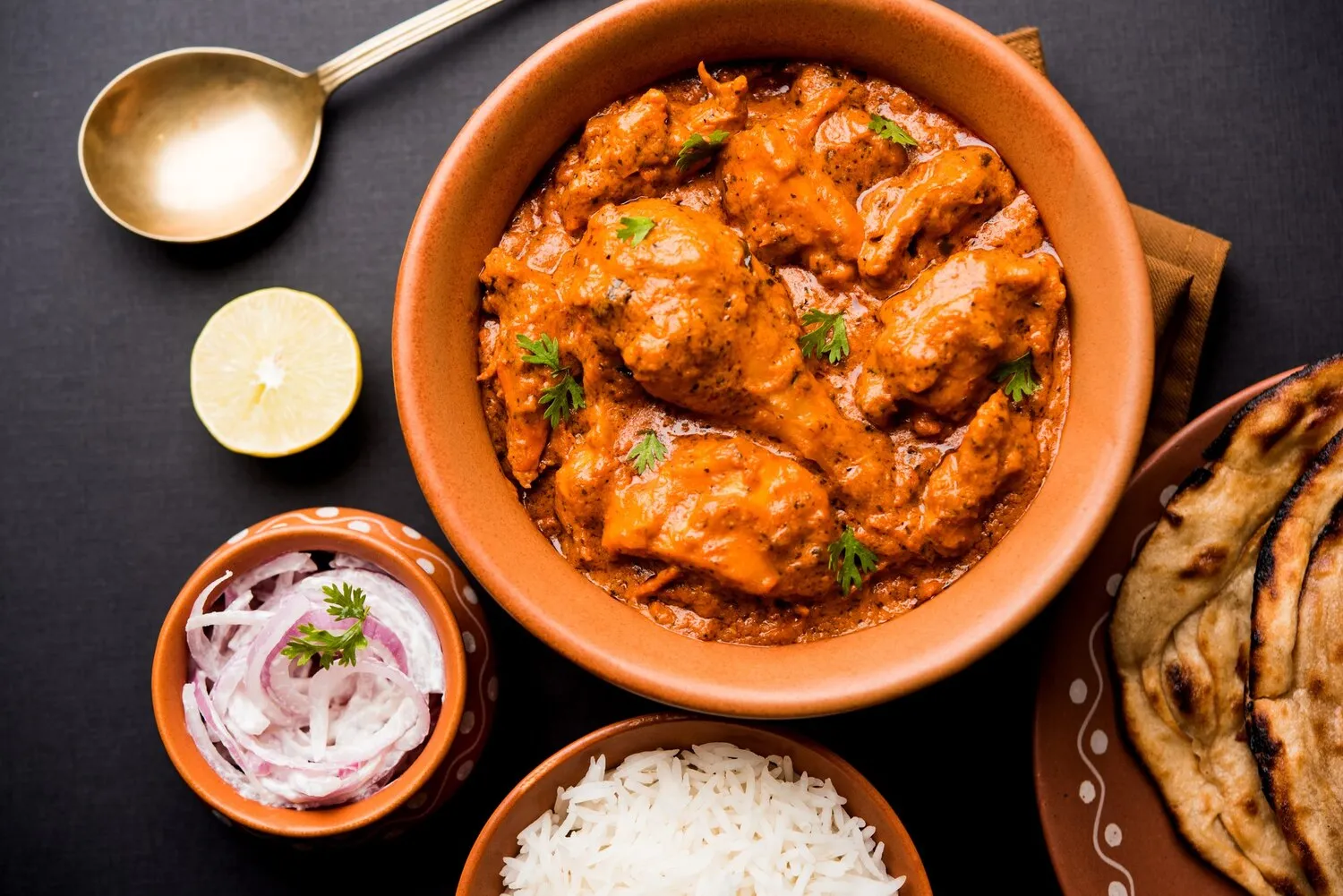
Lamb Curry
Lamb pieces cooked in a flavourful curry sauce.
Nutrition Facts
* The % Daily Value (DV) tells you how much a nutrient in a serving of food contributes to a daily diet. 2,000 calories a day is used for general nutrition advice.
Curries in India have a rich history stretching back thousands of years. The use of spices and complex cooking techniques evolved over centuries, influenced by various empires, trade routes (particularly the spice trade), and regional culinary traditions. Lamb, although not as universally consumed as other meats due to cost, has been integrated into specific regional curries, often reserved for special occasions or celebrations.
Lamb curry is not just a meal; it's often a centerpiece of celebrations and gatherings, reflecting hospitality and cultural traditions. Different regions of India have their own distinct variations, showcasing the diverse culinary landscape.
Celebratory Dish
Lamb curry is often prepared for special occasions like weddings, festivals (Eid), and family gatherings, reflecting its status as a richer and more luxurious dish compared to everyday meals.
Regional Variations
Each region in India boasts its own unique lamb curry recipes. For example, Rogan Josh from Kashmir is known for its vibrant red color and use of Kashmiri chilies, while Lamb Vindaloo from Goa is renowned for its fiery heat and Portuguese influence (use of vinegar).
Hospitality
Serving lamb curry is often a gesture of hospitality, demonstrating generosity and a willingness to share a flavorful and satisfying meal with guests.
Lamb curry is characterized by its rich, savory, and aromatic flavors, derived from a complex blend of spices. The lamb itself contributes a meaty depth, while the spices add layers of warmth, heat, and earthiness.
The dominant flavors typically include warm spices like cumin, coriander, turmeric, and garam masala. Chili powder or fresh chilies contribute heat, which can range from mild to very spicy, depending on the recipe and regional preferences. Ginger and garlic provide pungent aromatics. Other commonly used spices include cardamom, cloves, cinnamon, bay leaves, and fenugreek. The sauce base often involves onions, tomatoes, and sometimes yogurt or coconut milk to add creaminess and tanginess. The lamb absorbs these flavors during cooking, resulting in a tender and flavorful dish.
Tenderizing the Lamb
Marinating the lamb in yogurt, lemon juice, or ginger-garlic paste helps to tenderize the meat, resulting in a more melt-in-your-mouth texture. Slow cooking is also highly recommended.
Blooming the Spices
To maximize the flavor of the spices, it's crucial to 'bloom' them in hot oil or ghee before adding other ingredients. This process releases their essential oils and enhances their aroma and taste.
Patience is Key
Lamb curry benefits from slow cooking, allowing the flavors to meld together and the lamb to become incredibly tender. Resist the urge to rush the process.
Quality Ingredients
Using fresh, high-quality spices and good-quality lamb will significantly improve the taste of the curry.
Explore additional Indian dishes and restaurants
Explore IndianDiscover top dining spots and culinary experiences in München.
Explore MünchenLearn more about the food culture, restaurant scene, and culinary heritage of Germany.
Explore Germany
